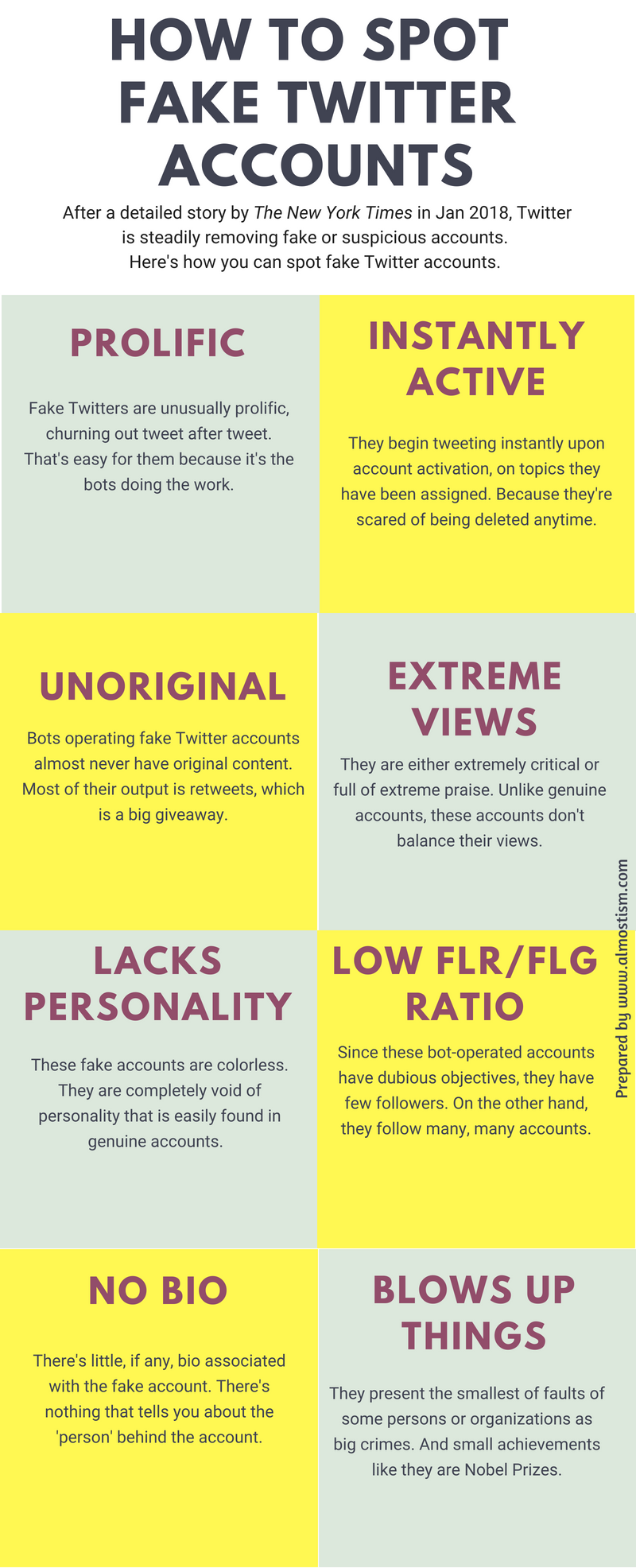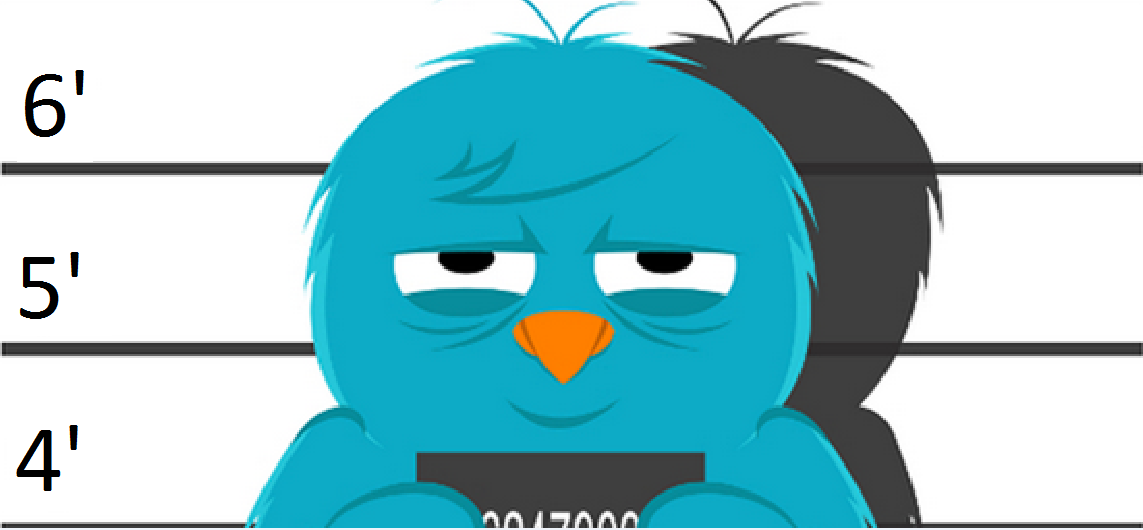Twitter is removing millions of fake Twitter accounts that have bloated the follower base of celebrities and wanna-be celebrities the world over.
With this, Twitter is now in the company of major digital platforms that are battling fake accounts, bot-generated reviews, purchased endorsements or puffed-up video view counts.
On the one hand, you have platforms like TripAdvisor fighting to remove fake TripAdvisor reviews. Google was under flak when it was disclosed that third-party app developers may be reading your Gmail messages. Facebook’s Mark Zuckerberg was questioned on the way it handles user data.
This post is close to 900 words. If you think you want to read all details, carry on. If you just want a shorter version of this post, just click here. If you want just the infographic of this post, just click here.
And now this.
But before that, here’s a video on how to spot fake Twitter accounts:
Why Twitter is deleting fake Twitter accounts
Nearly six months back, The New York Times published a story on how the business of selling hundreds of thousands of twitters followers was being based on. The detailed story was based on investigations carried out by the newspaper itself.
The story put one particular company Devumi under the scanner. According to the investigations, Devumi had “sold about 200 million Twitter followers to at least 39,000 customers.”

The company’s website says it’s currently not accepting new clients, but it can divert you to another company’s website (Fast Social Marketing) if you wish to get similar services.
The story by The New York Times revealed too many well-known figures purchasing these Twitter followers for the investigation to be taken lightly.
What exactly transpired between the breaking of the story and Twitter’s official announcement that it’s removing fake accounts is not entirely clear. What is clear, however, is Twitter that has acknowledged the problem and is willing to take some tough steps by deleting the fake accounts.
What are fake Twitter accounts and how they are created
Fake Twitter accounts are bot-created and bot-operated Twitter accounts with objectives that could be commercial, political or otherwise malicious.
These fake accounts are not be confused with accounts created and operated by real persons using incorrect names or parody accounts of celebrity accounts.
To begin with, a bot AI creates hundreds of email accounts. The number of such email accounts depend upon the software used to create the emails, but AI that can create 300 email accounts per hour are quite common. It might even pull photos from accounts of real users and use them as the profile pics in the fake Twitter accounts it later creates.
Once those accounts are created, they are fed into the Twitter system. The bot even generates fake usernames for the emails – if the username is already in use, the bot will generate a new one.
After that, the AI will work on the Twitter system, often through the Twitter API to complete the registration process.
And lo! the fake account is ready.
Once Twitter account is ready, the bot will swing into action and begin tweeting on the subjects it was created for.
This is how a fake account runs
For instance, if the fake Twitter accounts were created to promote a movie or a political candidate, it will begin tweeting about how great the movie is or how wonderful the candidate it.
As a matter of fact, the first tweet gives away the fact that it is a bot. A real user is very unlikely to begin by gushing about a movie or a political candidate; a bot will almost surely do that.
And there are several reasons why bots do that. For one, their masters have been paid to do that and they have to show results. And for another, Twitter is getting faster in spotting bots. It is likely it will notice the account is fake in a matter of hours, so the bot must spew out as many tweets as it can before it is caught and blocked.
How to identify fake Twitter accounts
Just as other fake identities in both the real and digital world, fake Twitter accounts exhibit certain faulty characteristics that make it relatively easy to spot.
That said, the bot is learning fast and so the methods that work today may become less effective tomorrow. Nevertheless, here’s how to identify fake Twitter accounts:
- They almost instantly begin tweeting about a certain subject, often within seconds of being created.
- They seldom produce original content. If you see an account that’s only retweets, the account is could be a bot.
- Fake Twitter accounts tend to be ultra-radical. An account that retweets only extreme views has more chances of being a fake one.
- Fake Twitter accounts, or bots, are typically prolific. They post a lot. I mean, a lot.
- Their accounts show little or no personality. Often they look anonymous or vague, at best.
- A fake Twitter account prefers blowing up small things or crying foul at the smallest of opportunities and events.
- A very low follower/following ratio is often common in newbie genuine accounts, but this also happens with fake accounts.
- Fake Twitter accounts may not have much of a bio. Also, they don’t have URLs.
Remember these aren’t the only methods to spot the fake ones. You can keep adding your own too!
Summary of this post
- Fake Twitter accounts (different from parody accounts of celebrities) are those operated by bots and not by a person.
- Twitter is deleting a big number of fake Twitter accounts. Fake Twitter accounts damage the platform in a number of ways.
- Fake Twitter accounts are believed to unfairly impact voters during elections.
- You can recognize fake Twitter accounts by their ultra-radical content and unusually prolific nature.
- Other ways of spotting fake Twitter accounts include little or no bio in profile and very low followers to following ratio.
Infographic
Here’s an infographic on how to spot fake Twitter accounts:

